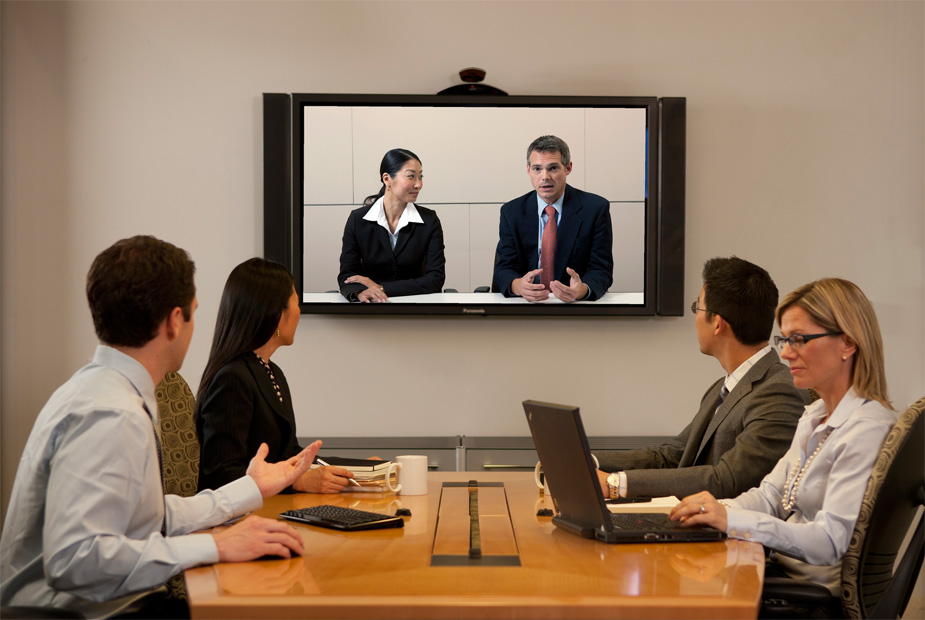It’s no secret that we all think meetings could be spent being a bit more productive. It’s not rare to hear that meeting members are distracted by irrelevant thoughts over the course of a meeting, that as many as 73 percent were preoccupied with other tasks (such as email checking) or that meetings simply last so long that most members (91 percent) begin to daydream and wander halfway through. As Atlassian.com discovered, we all suffer from wasting time.
 Everyone can agree that we need a fix, and we need it fast. But you may be wondering what video conferencing has to do with it. It’s simple – video conferencing has changed into a tool perfect for setting up and conducting meetings, and it isn’t as hard to implement as many would think. All you need is a little urgency, and a little direction – provide your team with both, and you can slowly eliminate the immense costs associated with wasted meetings.
Everyone can agree that we need a fix, and we need it fast. But you may be wondering what video conferencing has to do with it. It’s simple – video conferencing has changed into a tool perfect for setting up and conducting meetings, and it isn’t as hard to implement as many would think. All you need is a little urgency, and a little direction – provide your team with both, and you can slowly eliminate the immense costs associated with wasted meetings.
Video Conferencing Is More than Face-to-Face Conversation
In the past, video conferencing was just a matter of holding a conversation between two or more individuals across the globe with a video feed to provide a bit more personality and communication to the call. Today, it’s more. It’s less complicated, yet packed with newer features – less resource-intensive, yet more useful than it ever was, and the advantages of video conferencing software by companies like Blue Jeans is becoming more obvious than ever.
It’s more accessible, as well. Free voice-over IP services have pushed the premium competition to invent a new standard for the industry – and aside from the obvious jump in video and audio quality, and the better speeds, one of the primary reasons video conferencing is already changing the way companies meet with each other is interconnectivity and quick, secure file sharing services.
Taking Advantage of Modern-day File Sharing Solutions
Meetings could benefit greatly from better file access – members of a meeting could instantly share their work and their thoughts, and display their opinions through written content, through video files, through slideshow presentations, audio recordings and even screen sharing.
Nowadays, many IT companies offer video conferencing software that integrate those and other file sharing functions into their service. That way, companies can call members of a meeting into a conference call, and then proceed to share files, recordings, images and presentations while receiving visual and auditory input from all members, keeping an engaging atmosphere going throughout the meeting.
Utilizing More Visual Input to Save Time
Rather than using a whiteboard, marker and voice, or waiting for the set-up of a projector, video conferencing nowadays almost functions in a plug-and-play kind of way, allowing joining members to view files on-screen in the middle of a conference call, without the need for extra hardware and equipment.
Even though we prefer video to test, studies mentioned on Dacast.com also show that people are getting shorter attention spans with the amount of media we’re bombarded with – and other studies conducted in hospitals to gauge the usefulness of video conferencing vs. telephone calls prove that speaking face-to-face with someone during a meeting increases the amount of information retained after the meeting, versus simply calling in through the Internet or a telephone.
Applying this to a meeting is a matter of condensing information. Managers have to take a concrete point of discussion, and come up with the concise, bulleted details of that discussion. Then, they can use visual means or video to brief employees on anything from company statistics, to info about their latest client, and they can do all that while making sure to provide a strict frame of conversation to prevent losing scope of the situation and going off-topic.
Cutting out Travel Costs with Video Conferencing and Device Interoperability
When picturing a video conference, you might imagine two separate rooms filled with executives, thousands of miles apart, with a large screen (or several) on the wall connected to a video conferencing system.
Conversely, when you picture a meeting, you may be thinking of an elongated table by which all members are seated with the briefing material, a notebook or a laptop, while a projector on one end of the table is pointing at a blank wall.
Meetings utilizing teleconferencing and video conferencing technologies are entirely different. If you so wish, all your employees – including those in Auckland and Wellington just as much as your freelancers in Asia, Australia, or America – can be seated by their workstations in their respective homes and offices, on a phone, a laptop, a desktop, a tablet or a dedicated video conferencing set-up with a 40 inch flat screen.
What matters is that everyone shows up with their face and their attention, and no matter where, the meeting can continue seamlessly. Thanks to what cloud-based technology has done to simplify cloud-sharing and improve cyber security measures during video conferences, it’s entirely feasible to hold a dedicated meeting without even a single member sharing a room with another. Video conferencing eliminates the need and cost of physical attendance, while still letting employees feel like important, valuable members of the team – and that’s the greatest key to making a meeting matter, and pulling a team together.

